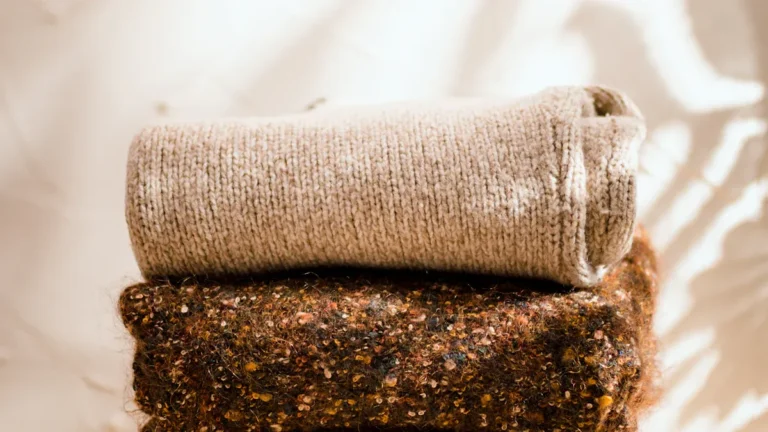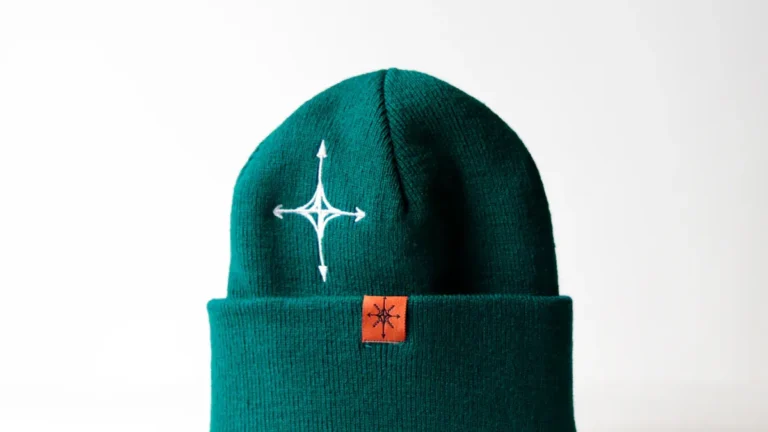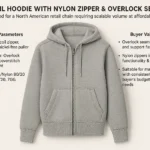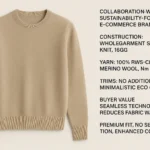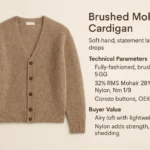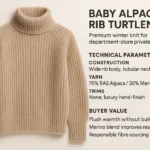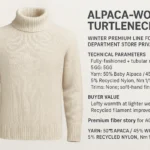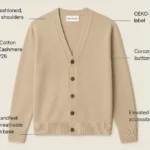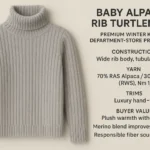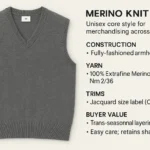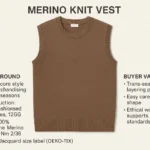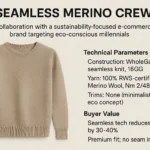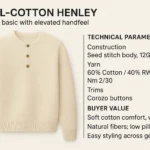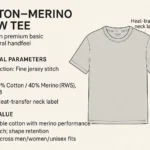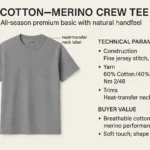
You find Pima cotton when you want soft and strong fabric. This cotton comes from plants first grown by the Pima tribe. People call it the “Cashmere of Cotton” because its fibers are longer and smoother than normal cotton. You get less skin irritation and feel more comfortable. Scientists say Pima cotton’s long fibers make it soft, help stop allergies, and last a long time. Here is how it compares:
Property | Benefit for You |
|---|---|
Softness | Feels nice, less skin irritation |
Hypoallergenic | Not likely to cause allergies |
Durability | Strong, good for daily use |
Breathability | Keeps you cool and dry |
Pima Cotton Explained gives you reasons to pick a high-quality fabric.
Key Takeaways
Pima cotton feels soft and lasts a long time. It is a good choice for clothes and bedding. The long fibers in Pima cotton help stop skin irritation. It is also hypoallergenic, so it works well for sensitive skin. Picking Pima cotton helps support farms that use eco-friendly ways to grow it. Pima cotton keeps its color and shine better than regular cotton. This means your clothes stay bright for a longer time. Check for labels like ‘Supima’ to make sure you get real Pima cotton with high quality.
Origins

Ancient Roots
If you look far back in history, you find Pima cotton’s story. People in South America grew cotton with long fibers many years ago. Farmers in Peru learned to care for these plants. They taught their children how to grow good cotton. This skill stayed in families for a long time. That is why the cotton is still high quality today. The Pima Native American tribe helped farm cotton in the Southwest. Their knowledge changed how cotton is grown now.
The Pima tribe’s farming skills helped make strong cotton. They knew how to grow cotton in dry deserts.
Naming & History
You may ask why it is called Pima cotton. The name comes from both science and tradition.
In the early 1900s, the USDA wanted cotton that could grow in dry places.
The Pima tribe had grown cotton for many years and shared their farming ideas.
The USDA worked with the Pima tribe. Together, they made Pima cotton and named it after the tribe.
The Pima tribe’s old ways helped the USDA learn more.
Their teamwork made cotton that is strong and special.
When you buy Pima cotton, you get the benefits from this history.
Cultivation Regions
Pima cotton grows best where it is warm and sunny. Farmers plant it in Arizona, California, and New Mexico. You also find it in Peru and Australia. These places have the right weather for long cotton fibers. When you buy Pima cotton, you help farmers who work hard to keep the cotton good.
Tip: Check the label for where the cotton comes from. This helps you pick real Pima cotton and supports good farming.
Pima Cotton Explained: Structure & Fiber Science

Fiber Length
The length of cotton fibers is important. Longer fibers make fabric stronger and softer. Pima Cotton Explained tells us why fiber length matters. Pima cotton fibers are about 1.4 inches or longer. Regular cotton, like Upland, has shorter fibers. These are only 1 to 1.1 inches long. Supima cotton is a special kind. Its fibers reach 1.5 inches. You can see this in the table:
Cotton Variety | Average Fiber Length |
|---|---|
Pima Cotton | 1.4 inches or more |
Upland Cotton | 1 to 1.1 inches |
Supima Cotton | 1.5 inches |
Longer fibers mean there are fewer loose ends. This makes fabric feel smooth and last longer.
Softness
Everyone likes clothes that feel soft on their skin. Pima cotton has long, thin fibers. These fibers make the fabric feel silky. The fibers twist together tightly. This keeps the surface smooth. You will not feel many bumps or rough spots. This softness helps stop skin irritation. People with sensitive skin often pick Pima cotton for comfort.
Tip: If you want soft shirts or sheets, check the label for Pima cotton.
Durability
You want fabric that can handle lots of use. Pima cotton has a strong fiber structure. In lab tests, it is stronger than regular cotton. The long fibers do not break or tear easily. You can wash and wear Pima cotton many times. It does not get holes or thin spots fast. This means your clothes and sheets last longer.
Pima Cotton Explained shows why strong fabric is good. You save money and make less waste by choosing long-lasting textiles.
Structure’s Impact on Feel & Performance
How cotton fibers are built changes how fabric feels. Scientists study fiber structure to learn more. They look at fiber length, crystallite size, and fibril direction. These things affect softness, strength, and pilling.
Here is a chart that shows how fiber structure links to performance for different cotton types:

You can also see the science in this table:
Fiber Type | Correlation (r) | Property 1 | Property 2 |
|---|---|---|---|
Upland A | 0.99 * | CIIR | STEelo |
Upland C | 0.90 * | MIR | STEten |
Upland D | 0.98 ** | MIR | HVIstr |
Upland E | 0.99 * | MIR | STEelo |
Pima | 0.58 * | CIIR | STEten |
Researchers found:
Cellulose chain length is linked to fiber strength.
Fibril direction and leftover stress also help make fibers strong.
When you pick Pima cotton, you get fabric that feels soft and does not pill. It stays strong for a long time. Pima Cotton Explained gives you the facts about comfort and performance you can feel every day.
Benefits of Pima Cotton
Comfort & Breathability
You want clothes that feel good and keep you cool. Pima cotton stands out because it feels soft and lets your skin breathe. The fabric is lightweight and allows air to move through it easily. This helps your body stay at a comfortable temperature, even on hot days. Many people choose Pima cotton for summer shirts and sheets because it keeps them cool and dry.
Pima cotton’s natural breathability means air can circulate freely. You stay comfortable and sweat less, especially in warm weather.
Pima Cotton Explained shows that this cotton type is a top choice for anyone who values comfort and freshness in their clothing.
Longevity
You want your clothes and linens to last. Pima cotton gives you that benefit. The long fibers make the fabric strong and resistant to wear. You can wash Pima cotton many times, and it will keep its shape and softness. Regular cotton often wears out faster and may lose its feel after a few washes.
Pima cotton garments can last up to 3 times longer than regular cotton.
They keep their softness and shape, even after many washes.
Here is a table that compares Pima cotton to regular cotton:
Feature | Pima Cotton | Regular Cotton |
|---|---|---|
Fiber Length | Longer fibers for enhanced strength | Shorter fibers |
Durability | More resistant to pilling and wear | Less durable, may require treatments |
Longevity | Lasts longer, maintains quality | Shorter lifespan |
Pima cotton’s long fibers help your clothes stay looking new. You save money because you do not need to replace them as often.
Color Retention & Luster
You want your clothes to look bright and fresh. Pima cotton holds color very well. The long, smooth fibers absorb dye better than regular cotton. This means your shirts, towels, and sheets keep their color after many washes. The fabric also has a natural shine, so it looks rich and vibrant.
Note: Pima cotton’s luster makes colors pop and gives your clothes a premium look.
When you choose Pima cotton, you get fabric that stays beautiful and colorful for a long time.
Hypoallergenic & Skin-Friendly Qualities
If you have sensitive skin, Pima cotton is a smart choice. The smooth fibers do not irritate your skin. Many people with allergies or skin problems pick Pima cotton because it is gentle. The fabric does not trap dust or allergens easily. You feel comfortable and safe wearing it all day.
Pima cotton is less likely to cause itching or rashes.
It is a good option for babies and people with allergies.
Pima Cotton Explained helps you see why this cotton is trusted for comfort, durability, and skin health. You get a fabric that feels good, lasts long, and looks great.
Pima Cotton vs Other Cottons
Pima vs Egyptian Cotton
You might ask how Pima cotton is different from Egyptian cotton. Both are extra-long staple cottons. This means their fibers are longer than regular cotton. Longer fibers make fabric soft and strong. Egyptian cotton usually has the longest fibers. It feels very fancy and smooth. Pima cotton also has long, strong fibers. It gives you softness and lasts a long time.
Cotton Type | Fiber Length (mm) | Breaking Strength |
|---|---|---|
Egyptian Cotton | 38-45 | High |
Pima Cotton | 35-42 | High |
Both types feel premium. Egyptian cotton may feel silkier because its fibers are a bit longer.
Pima vs Upland Cotton
Upland cotton is the kind you see most in stores. Its fibers are short. The fabric feels rough and wears out fast. Pima cotton has longer fibers. It feels softer and lasts longer. You will see fewer pills and less fading with Pima cotton. If you want clothes or sheets that last, pick Pima cotton.
Upland cotton: Short fibers, rough feel, wears out quickly.
Pima cotton: Long fibers, soft feel, lasts much longer.
Supima & Other Premium Labels
Supima is a label for Pima cotton grown in the U.S. Brands must use only pure U.S. Pima cotton to get the Supima name. You might see GOTS certification too. This means the cotton is organic and made responsibly.
Certification Standard | Description |
|---|---|
SUPIMA® Trademark | Shows the product uses only U.S.-grown Pima cotton of top quality. |
GOTS Certification | The main standard for organic fibers. It checks for good environmental and social practices. |
Look for these labels when you shop. They help you buy cotton that is high-quality and made the right way.
Key Differences: Fiber Length, Quality, and Sustainability
Cotton types have big differences in fiber length and quality. Pima and Egyptian cotton have long fibers and are very strong. Upland cotton has short fibers and is lower quality. Organic cotton is better for nature but may not last as long. Pima cotton is not always organic, but it lasts a long time. This makes it a good choice for the planet.
Pima cotton lasts longer and feels softer than most cottons.
Organic cotton helps the environment but may wear out faster.
Supima and Pima cotton are sustainable because you replace them less often.
Pima Cotton Explained helps you pick cotton that is comfy, strong, and good for the earth.
Sustainability
Farming Practices
Farmers use new ways to grow Pima cotton. Many pick organic farming to keep soil healthy. This helps plants grow strong and supports many living things. Some farmers use regenerative agriculture. This helps the land heal and stay good for future crops.
Organic farming keeps soil healthy and helps many species.
Regenerative agriculture is becoming more popular for the environment.
Farmers in dry places work hard to save water and use nutrients well. They use drip irrigation and mulch to keep water in the ground. These methods help plants grow with less water and fewer chemicals.
This study gives ideas and steps to use water and nitrogen better. It helps make cotton farming in dry places more sustainable.
Farmers also check how much water and nitrogen plants need. They learned that 400–444 mm of water and 387–440 kg of nitrogen per hectare works best in Northern Xinjiang. This helps use less nitrogen and keeps cotton yields high.
The results show that using 400–444 mm of water and 387–440 kg ha−1 of nitrogen is best for Northern Xinjiang. This is under film-mulched drip irrigation. It helps use less nitrogen and keeps yields up.
Environmental Impact
You might wonder how Pima cotton affects nature. Cotton farming uses a lot of water. In Arizona, farmers use about 1 million acre-feet of water each year for cotton. This is seven times more than all the water Tucson uses.
Cotton farms use about 5 acre-feet of water per acre each season.
Arizona cotton farms use about 1 million acre-feet of water every year.
This is seven times more than Tucson’s total water use, which is 140,000 acre-feet.
Saving water is very important for Pima cotton farms. Farmers try to use less water and protect rivers and lakes. Sustainable farming helps lower harm to nature. When you buy Pima cotton from eco-friendly farms, you help these efforts.
Uses & Care
Applications
Pima cotton is used in many things. It feels soft and is very strong. You find it in everyday clothes and fancy items. Here is a table that shows where Pima cotton is used:
Application Type | Description |
|---|---|
Everyday Clothing | Used for premium T-shirts, casual wear like tank tops and summer dresses due to its softness. |
Luxury Fashion | Ideal for tailored shirts, blouses, and high-end loungewear, combining comfort and elegance. |
Accessories | Popular for scarves, underwear, and socks because it is lightweight and breathable. |
You can wear Pima cotton in your favorite shirt. It is also in soft scarves and luxury pajamas. Many brands pick Pima cotton for things that need to feel nice and last long.
Care Tips
You want your Pima cotton clothes to stay soft and strong. Follow these tips to keep them looking good:
Use a gentle cycle or hand wash with mild soap.
Lay flat or hang to dry. This helps prevent shrinking and keeps the shape.
If you need to iron, use low heat and place a cloth on top.
Tip: Do not use fabric softeners. They can cover the fibers and make Pima cotton less soft.
Authenticity
You want to buy real Pima cotton. Some products use special tests to prove they are pure. Here is a table that shows two ways companies check if Pima cotton is real:
Method | Description | Key Features |
|---|---|---|
fiberTyping® | A genomic test that confirms the purity of Pima cotton from farms. | Patented, ensures pure Pima, repeatedly tested for purity. |
SigNature® T | An invisible molecular marker for tracking Pima cotton throughout the supply chain. | Scientifically verifies purity, has no effect on appearance, durable, unique molecular signature. |
Some brands use forensic technology to check Supima products. This checks the cotton’s natural fingerprint so you know it is real.
Note: Look for trusted labels and certifications when you shop for Pima cotton. This helps you get the quality you want.
Price, Value & Market Insights
Why Pima Costs More
Pima cotton usually costs more than regular cotton. There are a few reasons for this higher price. Pima cotton is very strong and lasts a long time. Many people want eco-friendly products, so the price goes up. Farmers also spend more money to grow and make Pima cotton. These extra costs make Pima cotton more expensive. You pay more, but you get fabric that feels nice and lasts longer.
Value for Money Compared to Regular Cotton
Pima cotton gives you more value than regular cotton. The table below shows how Pima cotton is better for your money:
Feature | Pima Cotton | Regular Cotton |
|---|---|---|
Softness | Superior softness | Less soft |
Durability | More durable, lasts 50% longer | Less durable, shows signs of age sooner |
Fiber Length | Long staple fibers | Shorter fibers |
Resistance to Issues | Resistant to fraying and tearing | More prone to fraying and tearing |
Common Uses | Luxury clothing, bedsheets, towels | General clothing |
Pima cotton feels softer and lasts longer. It does not tear or fray as easily. Many people are happy with Pima cotton because their clothes and sheets stay nice for years.
How to Balance Quality, Sustainability & Budget
You can shop smart when buying Pima cotton. Try these tips: Pick 100% cotton items. Cotton breaks down in nature and is better for the earth than plastic fibers. Check the weave and where the cotton is from. This helps you know how long it will last and how it feels. Look for labels that show the cotton was grown with care.
Tip: You do not need to buy the most expensive thing. Choose brands and labels that care about the planet.
You can enjoy Pima cotton’s comfort and strength. You can also save money and help the earth at the same time.
Expert Insights & Real-World Examples
Textile Expert Opinions on Fiber Quality
You might ask what experts think about Pima cotton. Textile scientists say it has long and strong fibers. These extra-long fibers make Pima cotton special. The fabric feels soft and smooth on your skin. Experts also say Pima cotton does not pill or tear easily. This helps your clothes look new for a longer time. Many professionals suggest Pima cotton for comfort and strength.
“Pima cotton’s long fibers make fabric feel fancy and last longer than regular cotton,” says one textile engineer.
Case Studies: Brands Using Certified Pima Cotton
Many brands pick certified Pima cotton for their clothes. In Peru, the clothing industry uses high-quality Pima cotton. Peruvian Pima cotton is known for being softer and stronger than other cotton. Brands in Peru control every step, from growing the cotton to making the clothes. The best cotton grows where the weather is just right. This makes the fabric even better.
Peruvian brands use Pima cotton for nice shirts and dresses.
Peru’s industry supports quality by managing each step, from farm to factory.
Clothes made with Peruvian Pima cotton feel softer and last longer.
Consumer Testimonials & Long-Term Wear Tests
People who wear Pima cotton share their thoughts. Many say their shirts and sheets stay soft after many washes. Tests show Pima cotton does not stretch out or lose shape. Clothes made from Pima cotton last about 50% longer than regular cotton. The long fibers help stop pilling and tearing. Your clothes keep their quality for a long time. You get comfort and strength, so Pima cotton is a smart pick for daily wear.
Tip: If you want clothes that stay comfy and look new, Pima cotton is a good choice.
Pima cotton feels very soft and lasts a long time. The fibers are long, sometimes up to 2 inches. Clothes made with Pima cotton last about half again as long as regular cotton. The fabric does not wrinkle or pill easily. If you want real Pima cotton and want it to stay nice:
Look for labels such as Supima or the American Supima Association’s seal.
Check if the fibers are long and the stitching is tight and even.
Pick brands you trust that use cotton from good sources.
FAQ
What makes Pima cotton different from regular cotton?
Pima cotton has longer fibers. These fibers make the fabric softer, stronger, and less likely to pill. You get clothes that feel smooth and last longer than regular cotton.
Is Pima cotton good for sensitive skin?
Yes! Pima cotton feels gentle on your skin. The smooth fibers help prevent itching and irritation. Many people with allergies or sensitive skin choose Pima cotton for comfort.
How can you tell if a product uses real Pima cotton?
Look for labels like “Supima” or “100% Pima cotton.” Trusted brands often show certifications. You can also check for a soft, smooth feel and tight, even stitching.
Does Pima cotton shrink after washing?
Pima cotton resists shrinking better than regular cotton. You should still wash it in cold or lukewarm water and avoid high heat when drying to keep it in the best shape.





